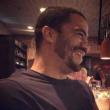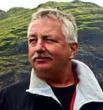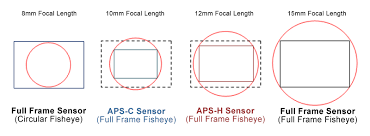Ricoh Theta V tips for best results with CUPIX?7602
Pages:
1

|
CFster private msg quote post Address this user | |
| I’ve completed my first “test” tour using a Theta V and Cupix. Being a real estate photographer, the wonky color casts and exposure issues stand out to me. Also, some parts of a pano being blurry while others are sharp. My settings were Auto exposure and HDR. I’m wondering if I should just take bracketed exposures instead and merge them into HDR using Photomatix Pro as it does a very good job of not blowing out the windows. Does anyone have any tips for getting the best results out of this particular camera? Thanks. |
||
| Post 1 • IP flag post | ||

|
jblythe private msg quote post Address this user | |
| I am interested in hearing more about this as well. I have been lurking for some time and I am trying to resist the Matterport plunge. My first guess was to go the Theta V and Cupix route as well so I am interested in hearing more of these tips and tricks! | ||
| Post 2 • IP flag post | ||

|
CFster private msg quote post Address this user | |
| Ultimately the best solution would be to take panos with a DSLR and fisheye lens. My Nikon D750 has fantastic dynamic range - I can fix almost anything in post. But using a DSLR takes longer. | ||
| Post 3 • IP flag post | ||
 Cupix Director Cupix Directorof Sales San Francisco |
scott_cupix private msg quote post Address this user | |
| Photomatix is popular for point and shoot because of batch processing tools and the "360 image" option in HDR settings. I'm happy to share my setting with you. Theta V has a bracketing option but I do not believe you can auto-adjust exposure, it's entirely manual. There are other point and shoot cameras with bracketing and manual options (and higher resolution), that might be a good bet if you are going this route. One of the best virtues of the Theta V is it's ease of use, good stitching right out of the camera, and on-board HDR so it's a good camera if you're using these features. Are you using the latest firmware and have you dropped the ISO as low as it can go? My findings with a DSLR is that it requires quite a bit more concentration and energy but it can be faster to get in and out of a site because you never have to separate from the camera. Unless you've got a huge tripod or are a tiny person that likes to crouch you inevitably will need to separate yourself from the camera and duck behind a wall/table/plant for every shot which adds time and effort to the collection with a point-and-shoot compared to a DSLR on a nodal head. Are you able to post the tour to share the quality you achieved? |
||
| Post 4 • IP flag post | ||

|
CFster private msg quote post Address this user | |
| @scott_cupix Thanks for the reply. I use Photomatix Pro extensively in my RE photography work - I’m impressed with some of its “interior” presets and its ability to recognize and suppress sunlight glare coming in through windows. However, the Theta V has a tiny sensor and no RAW files so the dynamic range available isn’t much to work with. I’ve only created one tour so far, as a test. The first thing I realized is I probably had the tripod elevated too high. The second was a noticeable blurry-ness toward the edges of some of the shots. You can notice it when entering the kitchen/living room area. The thought of using my DSLR and fisheye lens appeals to me however. I’m just unsure at this point of what’s required as far as panohead hardware and stitching software. |
||
| Post 5 • IP flag post | ||

|
CFster private msg quote post Address this user | |
| Also, I’m looking for more information as to what’s required to provide suitable DSLR images for Cupix. I would be using a Nikon D750 and Samyang 12mm fisheye. I’ve seen diagonal shots mentioned, but I’m not sure I understand. Would that be using a Nodal Ninja ring mount and literally mounting the camera diagonally? Is that to ensure completely up and down coverage? In that case, how many shots would be required for each 360 rotation? Then what software is recommended to stitch those shots into the appropriate pano format for Cupix? Thanks. | ||
| Post 6 • IP flag post | ||
 Cupix Director Cupix Directorof Sales San Francisco |
scott_cupix private msg quote post Address this user | |
| @cfster You might find these comparison useful (ignore WB) to help see side-by-side differences between DSLR and a few point-and-shoots. 1. https://players.cupix.com/p/H9XK4aie 2. https://players.cupix.com/s/6tDjKzsX.html (also below) For DSLR setup with a Nodal Ninja and keeping it simple, you'd mount the camera in portrait tilted slightly upward, take 4 shots in rotation then move to the next spot and save patching the nadir for post or restricting the viewer downward view mobility in the tour. A dedicated stitching software like PTGUI is required. Here's our blog article introducing on the topic, there are other resources that are similar. |
||
| Post 7 • IP flag post | ||

|
CFster private msg quote post Address this user | |
| @scott_cupix Well that tears it. My Theta is going back. I’ll never be happy knowing I can get quality that’s so much better with a DSLR I already own. The difference was night and day in the comparisons you posted. Thanks for your help and I’m definitely impressed with the Cupix platform. |
||
| Post 8 • IP flag post | ||

|
CFster private msg quote post Address this user | |
| I’ve done some research since my post and I think I’ve figured out what equipment is required to get the kind of quality I’m looking for. I might still keep the Theta for quick and dirty jobs however. - Samyang 8mm f/3.5 II with hood removed on full frame should give 180 degrees on the long edge. Shoot with camera rotated to portrait orientation. 4 shots required. - Nodal Ninja F6525 Lens Ring for Samyang 8mm. - Nodal Ninja F6171V R20 2.5/7.5 Static Tilt Head with Lower Rotator. I already have tripods and I use a Manfrotto geared head under my Nikon D750 so that would be perfect to put the NN pano head on top of. Now to determine what’s the best software choice for stitching. PTGUI or something else. |
||
| Post 9 • IP flag post | ||
 Nodal Ninja Nodal NinjaFounder |
Bill private msg quote post Address this user | |
| The workflow you outlined is the most popular 360 workflow by far. Used by Google and taught through their early training courses for the Google Trusted Photographers. Google has since relaxed their equipment requirements but I can still testify as a hardware dealer that while the Google DSLR workflow has lost appeal due to the lesser expensive one-shots, that it is widely popular in the world of Real Estate where imagery standards are much higher. I might also add that the Samyang 8mm lens is a manual lens and a bit on the soft side. If you want to kick your game up a notch consider glass made by the camera manufacturer - I use the Nikon 10mm (shaved hood) and 16mm prime lenses and Canon people like the Canon 8-15mm (@12mm). |
||
| Post 10 • IP flag post | ||

|
CFster private msg quote post Address this user | |
| @Bill Thanks. I’ll look into the Nikon, though I do have a 14mm Rokinon that might be the sharpest glass I own. I use it for astrophotography and landscapes a lot. I’ll have to see how the 8mm is. |
||
| Post 11 • IP flag post | ||
 Standard StandardMember Windsor, UK |
leonvanzweel private msg quote post Address this user | |
| @CFster Get a Samyang 12mm with your Nikon D750. Using the 8mm will take 6 shots around vs 4 with the 12mm. Use a Nodal Ninja r20 with its specific lens ring. It is tilted 7.5 degrees upwards and does not need a Zenith shot. For Cupix you don't need a Nadir shot or you can Nadir patch with your branding. (Be careful with shooting Zenith shots in Real Estate as you do not have texture-rich images shooting ceilings. You have long straight lines with very few control point.) Best stitching software for me it PTGui Pro. If your nodal point is stable (don't bump the camera) then it will auto stitch most of the time. If you need a Nadir shot you can do it handheld and use viewpoint correction in PTGui for the perfect Equirectangular. I have done a lot of testing between the Ricoh vs DSLR and the shooting time is about the same. It takes extra time to Merge the photos and stitch the DSLR, but you control the quality and dynamic range of the images. I would recommend that you complete your Image processing in Photomatix/Lightroom etc Save as Jpegs and run the images through the Jpeg Mini app to reduce the file sizes before proceeding to the stitching software. Also, run the equirectangular files through Jpeg mini post stitching. (There is no visible quality deterioration using Jpeg mini) This significantly reduces your processing times in both PTGui Pro and Cupix without compromising quality. It also allows you much bigger tours within the Cupix workspace size restraints as you will be working with image sizes of about 13500 x 7750px at about 10-12 Mb each. Join the 360 Panoramic Photographer Group on Facebook There is a wealth of information and discussions going on. |
||
| Post 12 • IP flag post | ||

|
CFster private msg quote post Address this user | |
| @leonvanzweel Thanks for your informative post. I have a few questions. 1. I’m still confused regarding lenses. Your 12mm recommendation contradicts Mike Ty’s here —> 360Rumors. He’s saying 6 or 8 shots needed and you have to roll the camera diagonally? 2. Why tilt 7.5 degrees up? Is it to specifically avoid taking the zenith shot? Most people want to see more floor than ceiling in real estate. Approximately what height are you shooting from? For RE photos I’m shooting from around 4’, or around light switch height. 3. Are you saying to run through Jpeg Mini both before and after stitching? |
||
| Post 13 • IP flag post | ||
 Standard StandardMember Windsor, UK |
leonvanzweel private msg quote post Address this user | |
| @CFster 1. Use an 8mm fisheye for cropped sensor and a 12mm for a full frame sensor. Otherwise you just get a circular image on a black background when using 8mm on a full frame. You waste a lot of sensor pixels and have to shoot 6 shots around to cover instead of 4 2. The Nodal Ninja R20 is automatically tilted 7.5 degrees upwards to cover the zenith and requires 4 shots around on a 12mm fisheye with a full frame sensor or 8mm fisheye with a cropped (APS-C) Sensor. It does not cover the Nadir/tripod. If it is required to shoot the nadir as well (which it is not in required in Cupix, your nadir patch can be automatically added or you can set the viewpoint to exclude the nadir)you can use a handheld technique: After you have shot your 4 around images, Place a small marker on the floor (coin etc) directly under your nodal point. Lock the camera on the rotator so it cannot slide around. Pick the tripod up and stabilize it against your body whilst positioning the nodal point with the camera pointing downward above your marker and take your picture. Use viewpoint correction in PTGui for this picture when stitching. I do this normally for highest quality panos only or I use my fully adjustable Nodal Ninja 3. 3. Normal RE height. Pick a height and stay with it otherwise the Cupix experience gets a bit strange if you vary the height too much. If you have to go lower or higher for a reason do it in a few steps. 4.I measure my colour temp with a Lightspectrum Pro app and set my average White balance accordingly for each room depending on the lighting. That removes a lot of post production. I shoot anywhere between 3 brackets +-2/3 up to 7 brackets 2 stops apart depending on the lighting conditions. 5. I complete my post production before I convert my RAW files to Jpeg. Once I export out of lightroom/photomatix, I run the files through Jpeg mini as it makes the stitching much quicker in PTGui Pro with smaller files (especially if you run into stitching errors and you have to process a pano a few times)When I export the Pano out of PTGui it is at 100% and then I run it again through Jpeg mini and end up with a very high quality equirectangular picture of about 13500 x 6750px with a file size of about 10-12Mb. If I do not use Jpeg mini my final file size is between 40 - 50 Mb. Using large files in Cupix burns through your 3GB hosting allowance very quickly. |
||
| Post 14 • IP flag post | ||

|
CFster private msg quote post Address this user | |
| @leonvanzweel 1. Even with removing the lens hood on the 8mm? |
||
| Post 15 • IP flag post | ||
 Standard StandardMember Windsor, UK |
leonvanzweel private msg quote post Address this user | |
| @CFster Yes. The Image that will cover your sensor with an 8mm fisheye is a full circle like in image 1. That is why you will need 6 shots around to cover a pano. When you use 12mm fisheye on a full frame sensor you get a cropped image on your sensor like Image 3 and you need 4 shots around.  |
||
| Post 16 • IP flag post | ||

|
CFster private msg quote post Address this user | |
| @leonvanzweel and shoot in portrait orientation? | ||
| Post 17 • IP flag post | ||
 Standard StandardMember Windsor, UK |
leonvanzweel private msg quote post Address this user | |
| @CFster The set-up instructions of the NN R20 will show you how to set up the lens ring in portrait mode. No diagonal or horizontal. | ||
| Post 18 • IP flag post | ||
Pages:
1This topic is archived. Start new topic?
















